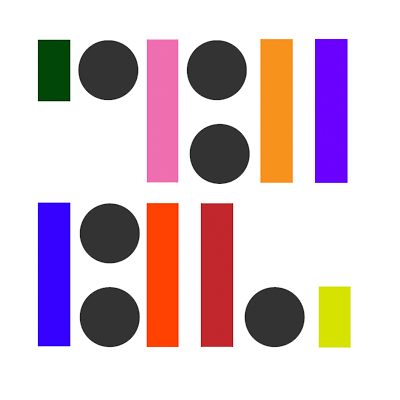interview with an educator
School of Machines, Making & Make-Believe recently turned three-years-old. We interviewed our fearless leader, Rachel Uwa, about the school’s beginnings and where we’ll go from here.
Interview by Marie LeBlanc Flanagan.
Congratulations on your three-year anniversary! How are you?
Thanks! We, myself along with the community here, are all very excited about turning three. We’ve hosted over twelve programs across four countries, 147 students and 57 instructors altogether representing 43 countries, 13 exhibitions, two online classes and one residency over this period, so we’re pretty happy to see what’s next.
How would you describe School of Machines, Making & Make-Believe to those unfamiliar with it?
Thus far, the school has been a three-year exploration in what an intensive, creative technology education program could be! We’re guided by a vision of being a place where generous, kind humans meet interactive, thoughtful, and playful Kunst; a place for people to learn hands-on creative technology in new contexts.
What made you to create your own school?
I’ve always been addicted to learning. Knowing that no matter what I do that addiction will never be cured, I figured I should formalise it by creating learning experiences and spaces where myself and others can deepen our own art practice while integrating more creative technology into our work.
In what ways is it different from other schools?
I think my approach is different for one thing, I’m an individual not an institution.
Also, creative technology is brilliant but I’m trying really hard to teach life skills and help everyone think about what it means to be human in the context of being surrounded by all this fancy shiny tech stuff. Regardless of what technology we’re using, we’re all human! That’s the common denominator I like to start with.
What does a program look like?
Programs are typically four-weeks long although I’m starting to put together shorter ones. Four-weeks are ideal, though, as it’s the perfect amount of time to focus on a very narrow topic, get hands-on and enough practice to actually learn some skills that you can walk away with.
This is the main thing, I want to empower people to not just talk about ideas but to make them happen, continually throughout life. So really the four-weeks is intense but it’s also only the beginning.
How do you curate a program?
I’m always trying my best to pay attention to what’s going on in the world whether it be related to the tech world, or politics and society. When I curate a class I try and combine them such that there’s always an underlying basis for exploring a new technology.
Everyone creates classes around the latest shiny technology, I’m interested in going deeper. Finding instructors who have a similar vision in that regard is also an important factor.
Who are the instructors?
The instructors I enjoy working with are often well-known in their field or communities and just all-around brilliant humans!
We have people like Chris Sugrue, who has so far taught creative coding here with Processing, openFrameworks and now C# in Unity and who currently also teaches at Parsons Paris. I often bring in brilliant people who stem from the Design Interactions program at The Royal College of Art under Dunne and Raby, such as Andrew Friend and Sitraka Rakotoniaina, Joseph Popper and Nick Mortimer, and now Chris Woebken and Sascha Pohflepp. I find their deeper understanding of speculative and critical design important when thinking about approaches to interactive and creative technology.
Cool ideas don’t often come out of thin air! But you can use techniques that encourage taking a look at the past and the present as a foundation for understanding what will come next and your art and design work can be better for it. I find it also important to bring in as many female instructors as possible. We need more diverse role models! People often have the impression there are so few women working in technology. It’s true! But that’s also why it’s important to make known the ones that are here.
I’m trying to create something special and the wonderful instructors I choose to work with are absolutely a part of that.
Who are your students typically?
Students tend to be artists and creatives interested in working with interactive technology and tech people who desire to be more creative or in some way express something meaningful.
Sometimes they’re coming from a field they love and are simply looking to enhance their current skills. Other times they’re coming from a field they hate and looking to get into something completely new. I’ve seen all types of students excel!
Marie LeBlanc Flanagan is a brilliant past student who took several classes last summer. She’s been an Editor-in-Chief at Weird Canada and also founder of Drone Day, an international day for celebration of drone music.
She moved to Berlin with a desire to make her own experimental games and created several brilliant projects while here, including Closer, a co-operative computer vision game that uses two people’s moving bodies as a shared single controller. After being here she’s also presented her games at several festivals internationally!

